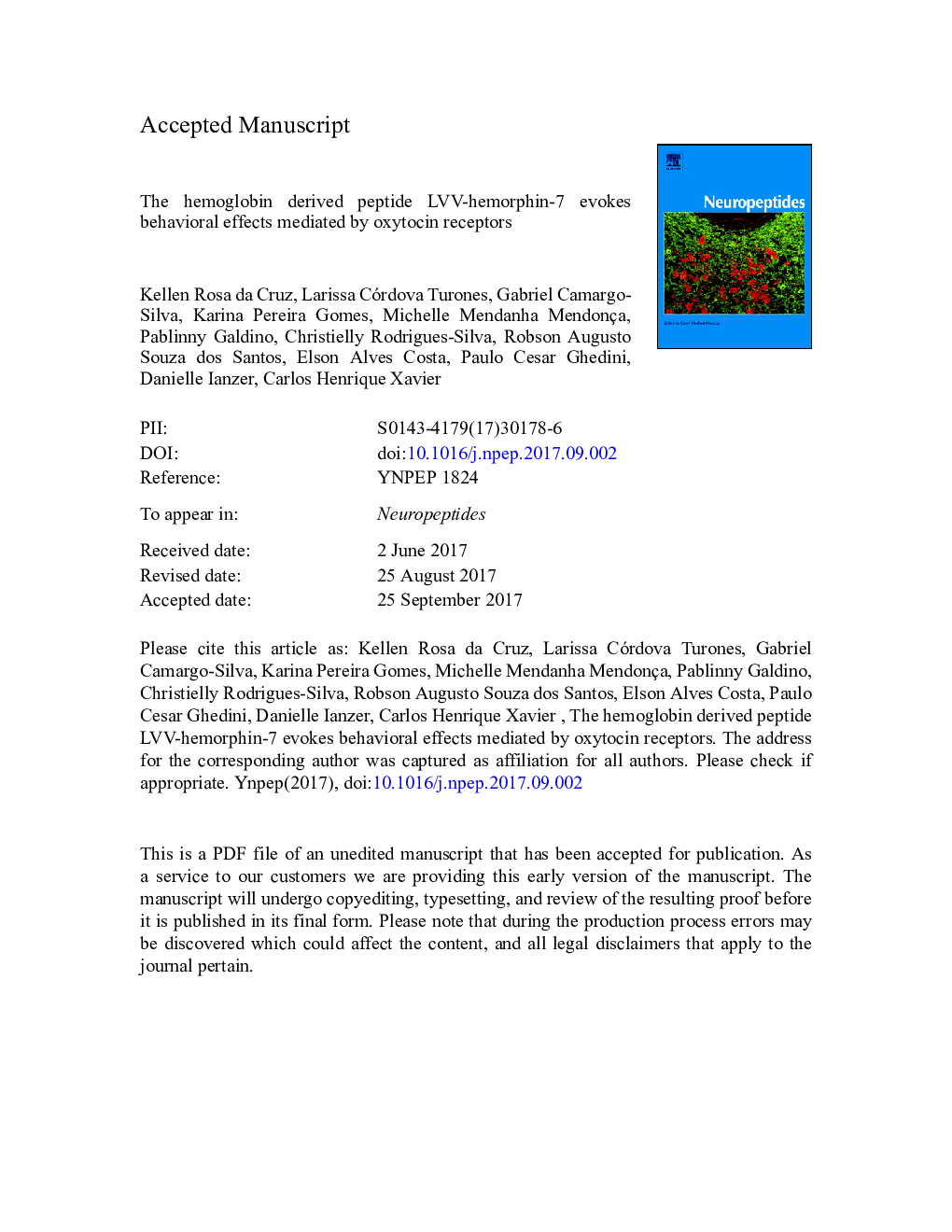| Article ID | Journal | Published Year | Pages | File Type |
|---|---|---|---|---|
| 8633381 | Neuropeptides | 2017 | 43 Pages |
Abstract
LVV-hemorphin-7 (LVV-h7) is bioactive peptide resulting from degradation of hemoglobin β-globin chain. LVV-h7 is a specific agonist of angiotensin IV receptor. This receptor belongs to the class of insulin-regulated aminopeptidases (IRAP), which displays oxytocinase activity. Herein, our aims were to assess whether: i) LVV-h7 modifies centrally organized behavior and cardiovascular responses to stress and ii) mechanisms underlying LVV-h7 effects involve activation of oxytocin (OT) receptors, probably as result of reduction of IRAP proteolytic activity upon OT. Adult male Wistar rats (270-370 g) received (i.p.) injections of LVV-h7 (153 nmol/kg), or vehicle (0.1 ml). Different protocols were used: i) open field (OP) test for locomotor/exploratory activities; ii) Elevated Plus Maze (EPM) for anxiety-like behavior; iii) forced swimming test (FST) test for depression-like behavior and iv) air jet for cardiovascular reactivity to acute stress exposure. Diazepam (2 mg/kg) and imipramine (15 mg/kg) were used as positive control for EPM and FST, respectively. The antagonist of OT receptors (OTr), atosiban (1 and 0,1 mg/kg), was used to determine the involvement of oxytocinergic paths. We found that LVV-h7: i) increased the number of entries and the time spent in open arms of the maze, an indicative of anxiolysis; ii) provoked antidepressant effect in the FS test; and iii) increased the exploration and locomotion; iv) did not change the cardiovascular reactivity and neuroendocrine responses to acute stress. Also, increases in locomotion and the antidepressant effects evoked by LVV-h7 were reverted by OTr antagonist. We conclude that LVV-h7 modulates behavior, displays antidepressant and anxiolytic effects that are mediated in part by oxytocin receptors.
Keywords
GMPIRAPATSi.v.FSTACE 2i.p.EPMACEGAPDHAT4cDNADNAAtosibanForced swimming testangiotensin converting enzymeangiotensin IVangiotensin converting enzyme 2desoxyribonucleic acidElectrocardiographyECGelevated plus mazeintraperitonealIntravenousHeart rateBlood pressureglyceraldehyde 3-phosphate dehydrogenase
Related Topics
Life Sciences
Biochemistry, Genetics and Molecular Biology
Endocrinology
Authors
Kellen Rosa da Cruz, Larissa Córdova Turones, Gabriel Camargo-Silva, Karina Pereira Gomes, Michelle Mendanha Mendonça, Pablinny Galdino, Christielly Rodrigues-Silva, Robson Augusto Souza Santos, Elson Alves Costa, Paulo Cesar Ghedini, Danielle Ianzer,
